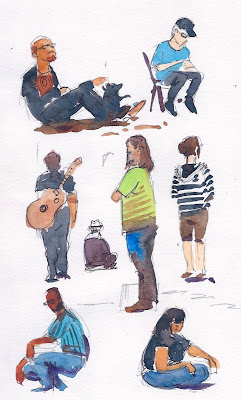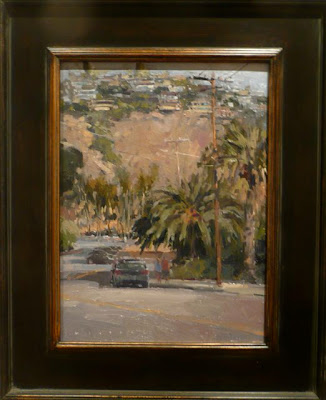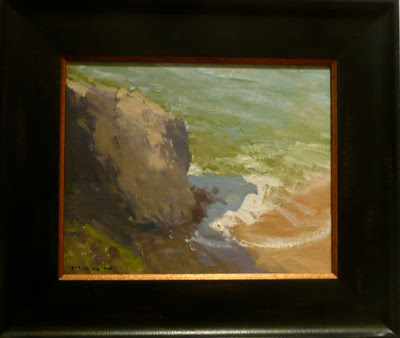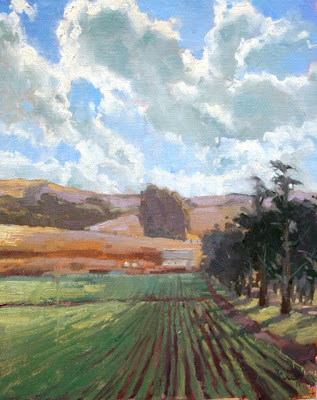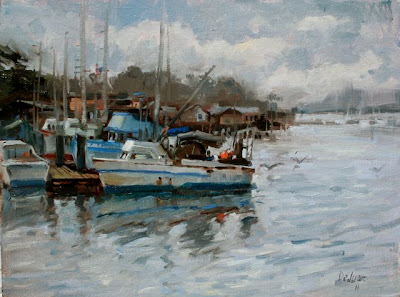I am always a bit pressed for time so small studies ( I don't like calling them "little gems") are a must if I want to get the amount of practice I need. Drawing and painting in notebooks is a good way of not getting rusty. Recently I've been admiring sketches done by the likes of Nathan Fowkes and Mike Hernandez. Both are concept artists for Dreamworks Animation, my old employer. Their sketches sometimes are done with watercolor and gouache.
Watercolors offer a quick way to block and simplify complex scenes in small format. The gouache comes in handy to add detail. Its opaque nature gives body to the painting. I have done small pieces in oil, in straight watercolor, in watercolor and ink, in watercolor and white gouache only, etc.... the value of the study is not in the medium used but rather in the simplification.
 |
| "Huntington roundabout" watercolor and white gouache |
These are some of the advantages and disadvantages I find in small pieces. The advantages are pretty obvious:
1) One glance judgement. Small studies allow you to avoid getting lost in detail. The shapes and composition , the tonal values and the color work or they don't and you can see that in the palm of your hand.
2) Savings in time and effort. A small study can save hours in a large painting since it allows the artist to spend enough time solving problems before they rear their ugly head.
3) Diary value. Over time, notebooks register advancement and state of mind, even improvement.
4) Options. Doing several studies at different times or different angles allow for a catalogue of choices if a final piece is desired. They also can be goals in themselves. Nobody says small studies need to end as large paintings.
5) Scope of ideas and experiments. Some things just don't grant a whole statement. A simple scene, a detail, a simple light effect...these things might grant a small study, not a more time consuming work.
5) Scope of ideas and experiments. Some things just don't grant a whole statement. A simple scene, a detail, a simple light effect...these things might grant a small study, not a more time consuming work.
 |
| "Atlas street" oil on canvas 7"x5" |
There are also disadvantages, mostly one: I find it hard to launch into larger pieces when I know I can be "done" in two hours with an idea. Larger pieces require a preplanning, patience and discipline that is its own practice. After all, it is difficult to mess up the palette when its all used up in one session.
The freshness of a sketch needs to translate in larger pieces but miniature practice can make one underestimate the "larger" scale required, the use of the arm rather than the wrist so to speak.
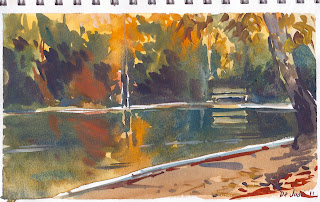 |
| "Fishing pond" watercolor and gouache |























